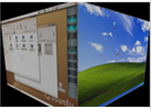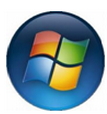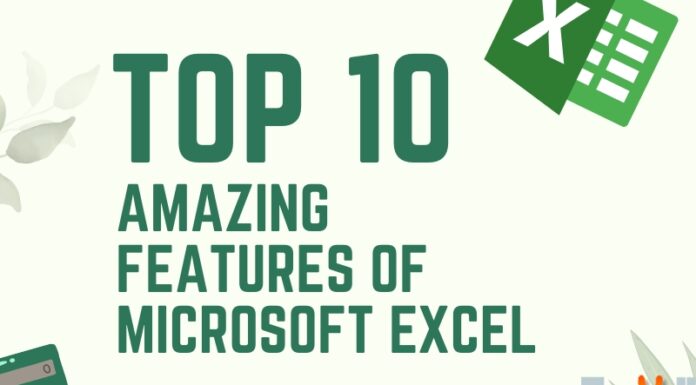Microsoft versus VMware
Virtualization: Battlefield – Microsoft versus VMware
The real struggle for virtualization market has started recently. Several years ago, the technology firmly associated with VMware Company and had many limitations for applications. Now, practically all manufacturers of infrastructure management confess that sooner or later virtualization will form the basis of IT companies which have at least few dozen servers and workstations.

The main players of the virtualization market are considered VMware, Microsoft,Citrix and Oracle. Examining the stages of technology development, we can see that the key technology is the ability to “hot” transfer of virtual machines between physical servers and storage without interrupting their work as well as the means for automation of administrators’ tasks that formed the basis of many distributed services.

Many years ago, such technologies possessed VMware, the leader of the market. Against this background, Microsoft promoted very deliberately the product Microsoft Virtual Server which is based on the elaboration of Virtual PC and seemed it was not going to join the fight for market of virtualization, while VMware conquered confidently the market and griped the sector of large corporate clients.

Realizing its technological lag, Microsoft has joined the fight and announced the Windows Server Virtualization technology which later appeared in the server operating system Windows Server 2008 and the hypervisor itself was called Hyper-V. It should be noted that Microsoft bided on slightly different from VMware model for platform distribution, and called the VMware approach “virtualization tax” or “vTax”. Microsoft virtualization has become a part of server operating system.
Differences between VMware vsphere 5 and Microsoft hyper-V:
| For VMware vsphere 5 | For Microsoft hyper-V | ||
| » | Type of hypervisor | Installed on the server without an operating system | Installed as a part of Windows Server 2008 R2 (Hyper-V) |
| » | Delivery options | Free edition of VMware or as a part of a commercial platform of VMware vsphere | Free product Microsoft Hyper-V Server 2008 R2 on the base of Server Core or as a server Windows of 2008 server R2 |
| » | Centralized control | VMware vCenter | System Center Virtual Machine Manager |
| » | The file system for storage of virtual machines | Cluster system VMFS, own development of VMware | Hybrid file system CSV, add-on NTFS |
| » | Clusters of high availability and fault tolerance | VMware High Availability | Clusters Windows Server 2008 R2 and Virtual Machine Manager |
| » | Load balancing between host servers | VMware Distributed Resource Scheduler | Technology Performance Resource Optimization (PRO) from Microsoft and partners |
| » | Dynamic movement of virtual machines between physical servers without any downtime | VMware VMotion | Microsoft Live Migration |
| » | Dynamic movement of a storage for virtual machines | Storage VMotion (no downtime) | Quick Storage Migration (with the interruption of the virtual machine) |
| » | Backup | VMware Data Recovery and foreign products through interface VMware vstorage API. There is integration with the products of Symantec, HP, IBM, CA and others | Data Protection Manager 2007 R2, Data Protection Manager 2010, foreign solutions from Symantec, IBM, CA, etc. |
| » | Continuous availability for virtual machines in case of failure of equipment of the host server | Technology VMware Fault Tolerance | No |
| » | Deploying virtual machines with disks, increasing as the content data | VMware Thin Provisioning | With the help of partner products (such as Citrix Essentials for Hyper-V) |
Despite the fact that virtualization means of Microsoft technologically drop behind a little from VMware, they already have crucially important functions for many companies, first of all for small and medium businesses.

The positions of VMware and Microsoft are quite clear: VMware is betting on virtual infrastructure, where the company has traditionally been strong, but Microsoft possessing with large resources is trying to expand business in all possible directions, using leadership in the market of operating systems and popular applications, and relying on the tight integration of various components of the platform.


















